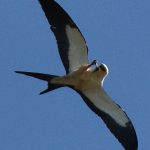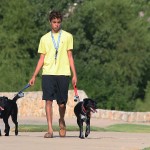Dateline – June 16, 2014
NOTE: This post is part of a continuing series of observations: [ First | << Prev | Next >> ]
This article is meant to be an update on the progress of Josey, the orphaned Bobcat kitten that was rescued in Carrollton about two months ago. As you can see from the pictures below little Josey is doing just fine.
Josey is now under the care of some very dedicated wildlife rehabbers. This groups specializes in Texas Bobcats and is very well equipped to help Josey reach adulthood and to prepare her for eventual release back into the wild.
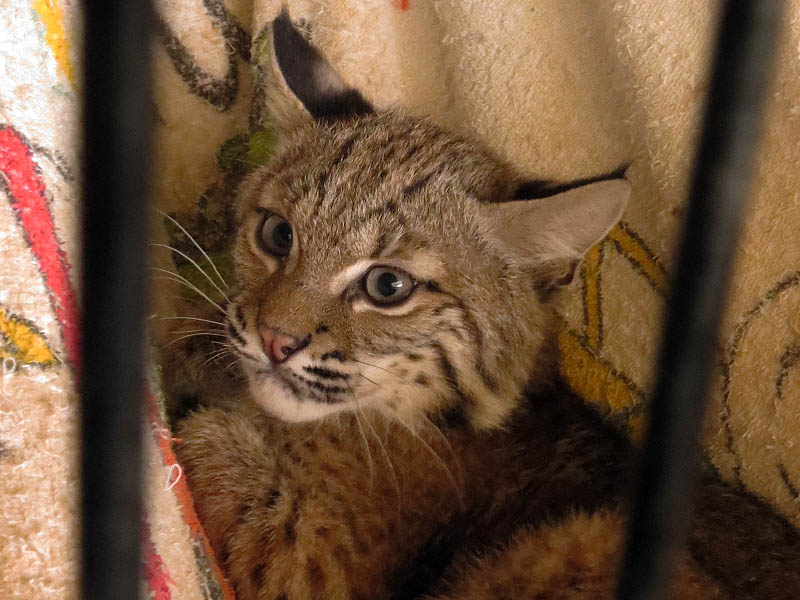
Josey has made remarkable progress since she was brought to the center as a small 8-week-old kitten. She is easily three times the size she was when rescued and looks more like an adult cat than a kitten these days. The folks at this facility tell me that Josey is eating well and enjoys playing with a stuffed toy in her pen when she thinks no one is looking.
Her caretakers go to great lengths to ensure that Josey does not become tame or habituated during her time around people, and I saw for myself that their efforts are working. Josey still growls and hisses when approached, and that is exactly what you want to see in a Bobcat that is a candidate for release. Bobcats must retain a healthy deference for people in order to survive in the wild.

Josey will soon have some Bobcat company. Over the last several weeks the rehab center has taken in a total of ten new orphaned baby Bobcats. Included in this group was a litter of very young kittens which were rescued after their den was destroyed by a recent rain storm.

The rehab facility caring for Josey is located in east Texas and a visit to see her requires a dedicated road trip. Since I was going to be on the road anyways, I decided to use this as an opportunity to stop by some wildlife viewing locations that I can’t always get to as often as I would like. I plotted a course and took the long way around.
Unfortunately the weather was not optimal for picture taking on this trip out. A heavy overcast guaranteed that the lighting would be poor and photos would be muted. This is a set of circumstances I have to face far more frequently than I would like, but my time for engaging in wildlife photography is very limited and I have to take my opportunities as they come to me. I watch the weather reports very closely these days, sometimes hoping the forecast are accurate on an hour by hour basis—they rarely are!
Our first stop was a Dallas County Nature Preserve. The small shallow lake there attracts a wide variety of wading birds and its almost always worth a visit. This time was no different.
The first bird we observed was a lone White Ibis feeding along the edge of the pond. These are very interesting birds and I have learned some important new things about them over this past year. First is that these ibises are breeding right here in the metroplex. Last year I documented a small group of them nesting in a larger heron rookery located less than three miles from downtown Dallas. The account of the nesting ibises is included in a series of articles about a pair of nesting Tricolored Herons. The herons later had to surrender their nest when a group of pushy White Ibises forced them out and took over. The story begins here: Tricolored Heron – UTSWMC Nest
The other interesting thing I discovered about White Ibises this year is that we have a resident population. At the very least there is a small group of about a dozen ibises that spent the winter in southeast Dallas County and did not migrate to warmer climes.
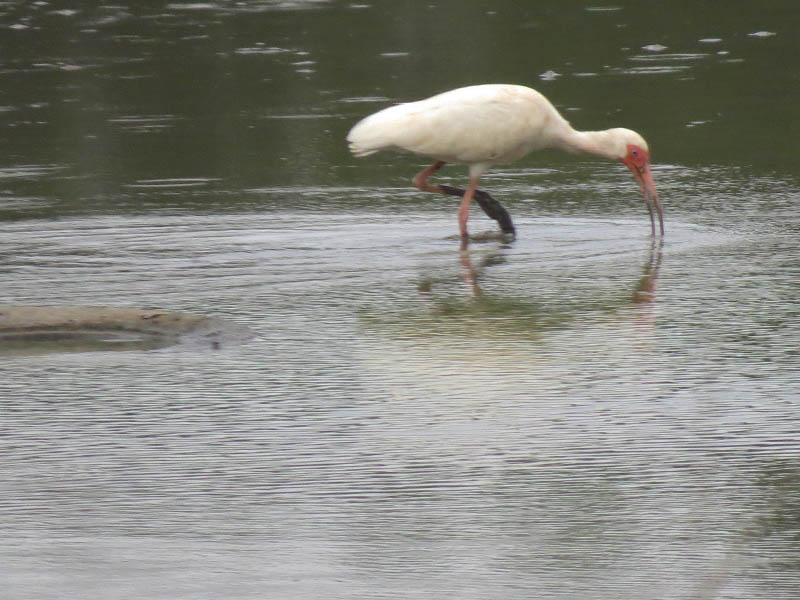

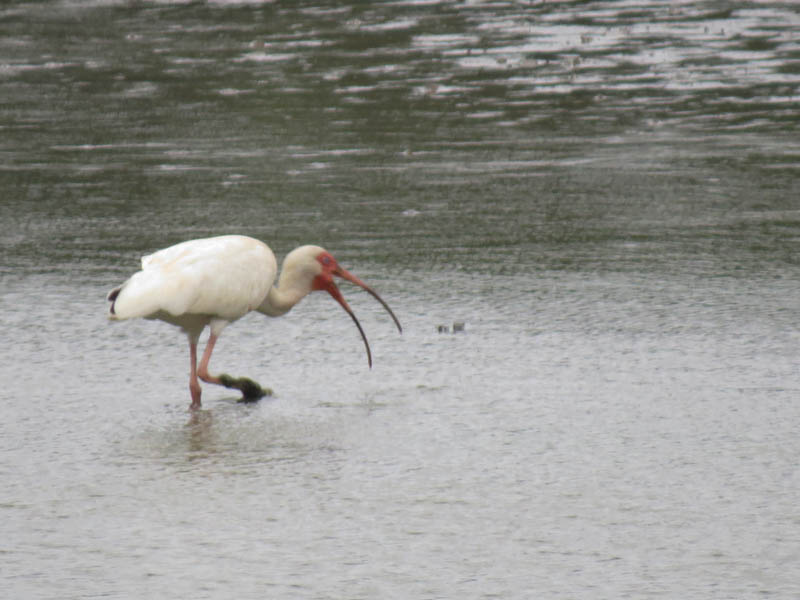
Just as we were preparing to hit the road again a Tricolored Heron swooped in and landed in the water. Tricolored Herons are interesting and rarely seen birds in the metroplex, so it is always worth it to stick around when you get a chance to observe one. This wary individual kept his distance from us and soon moved on, but we were able to get a nice documentary shot of his visit.

Here is what Wikipedia has to say about the Tricolored Heron:
The tricolored heron (Egretta tricolor) formerly known in North America as the Louisiana heron, is a small heron. It is a resident breeder from the Gulf states of the USA and northern Mexico south through Central America and the Caribbean to central Brazil and Peru. There is some post-breeding dispersal to well north of the nesting range.
Tricolored heron’s breeding habitat is sub-tropical swamps. It nests in colonies, often with other herons, usually on platforms of sticks in trees or shrubs. In each clutch, 3–7 eggs are typically laid.
This species measures from 56 to 76 cm (22 to 30 in) long, and has a wingspan of 96 cm (38 in). The slightly larger male heron weighs 415 g (14.6 oz) on average, while the female averages 334 g (11.8 oz). It is a medium-large, long-legged, long-necked heron with a long pointed yellowish or greyish bill with a black tip. The legs and feet are dark.
Adults have a blue-grey head, neck, back and upperwings, with a white line along the neck. The belly is white. In breeding plumage, they have long blue filamentous plumes on the head and neck, and buff ones on the back.
Tricolored heron stalks its prey in shallow or deeper water, often running as it does so. It eats fish, crustaceans, reptiles, and insects.
Our next stop was a new Dallas park located near the Trinity River and I-20. I had recently received a report of some interesting wildlife sightings at this location and wanted to check them out for myself.
Unfortunately, other than a female Mallard and her ducklings there just wasn’t much wildlife activity at the park on this morning. I included the pictures below to mostly illustrate the trash and other refuse that is being exposed as the pond here continues to dry up.

This is a new park which opened recently after an extensive renovation. Work done on this location included the construction of a paved parking lot, installation of fishing piers, and a paved walking trail. Removing this trash at the time of the construction would have been difficult because pond was still full of deep water. But now a good portion of the pond has dried, presenting an excellent opportunity to clean up some of this refuse if anyone were inclined to do it.
The same is true all across North Texas. The extended drought has exposed trash that would be difficult or impossible to get to ordinarily. Wouldn’t it be something if a concerted cleanup effort allowed for something of benefit to come from the long North Texas drought?
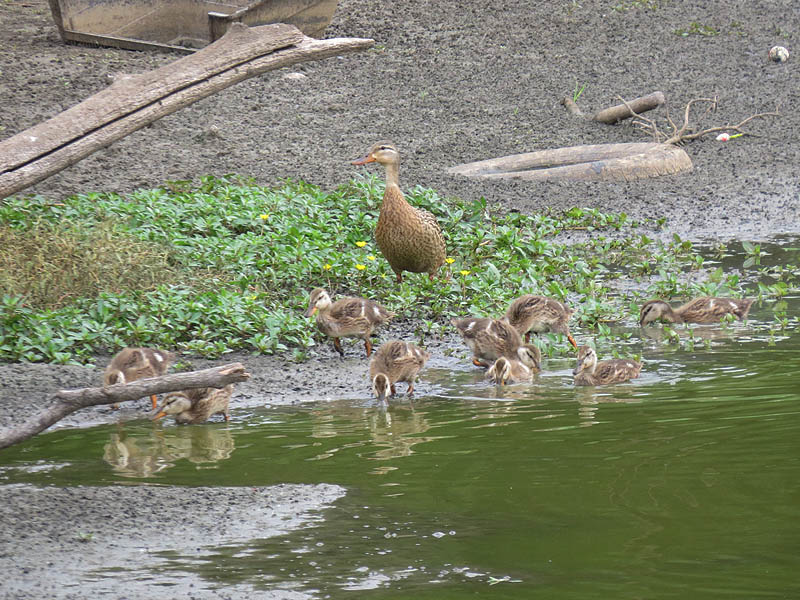
Back on the road again we headed south for a spot near the county line. A reader had suggested this location to me as a place that would be worth my time to visit. Sure enough, he was right.
The first thing we noticed as we approached this unassuming pair of small ponds was a family of Canada Geese retreating into the safety of the water. The family is made up of an adult male and female, and their two offspring. As you can see from the pictures below there is something slightly unusual about the appearance of some of these geese.
The male in particular is significantly larger than the other geese and has a bigger white cheek patch which extends to a second white patch on the bird’s forehead. One of the juveniles also shares his father’s coloration traits.
It is suspected that the big male is a member of the subspecies known as the Giant Canada Goose (Branta canadensis maxima). If so, this is a variation that is rarely seen in North Texas. Here is what Wikipedia says about the Giant Canada Goose:
By the early 20th century, over-hunting and loss of habitat in the late 19th century and early 20th century had resulted in a serious decline in the numbers of this bird in its native range. The giant Canada goose subspecies was believed to be extinct in the 1950s until, in 1962, a small flock was discovered wintering in Rochester, Minnesota, by Harold Hanson of the Illinois Natural History Survey. In 1964, the Northern Prairie Wildlife Research Center was built near Jamestown. Its first director, Harvey K. Nelson, talked Forrest Lee into leaving Minnesota. Forrest Lee would head the center’s Canada goose production and restoration program. Forrest soon had 64 pens with 64 breeding pairs of screened, high-quality birds. The project involved private, state and federal resources and relied on the expertise and cooperation of many individuals. By the end of 1981, more than 6,000 giant Canada geese had been released at 83 sites in 26 counties in North Dakota. With improved game laws and habitat recreation and preservation programs, their populations have recovered in most of their range.

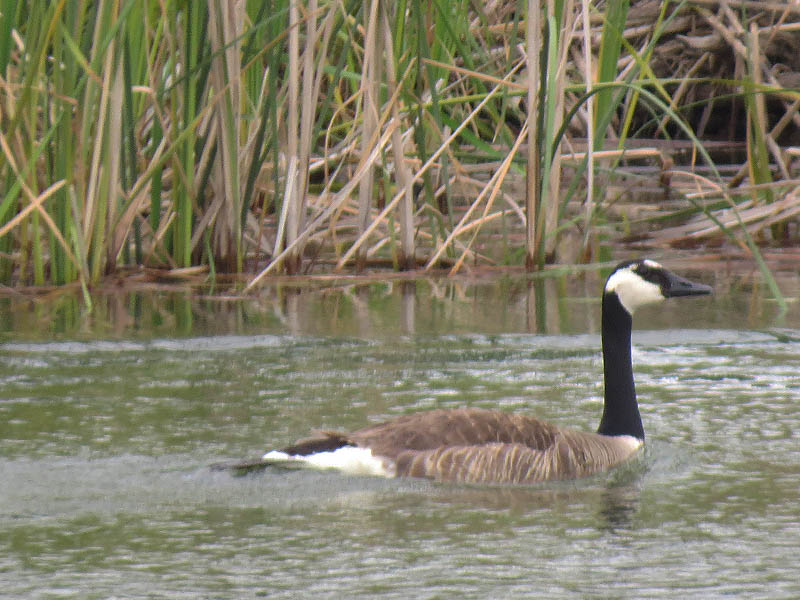

Beaver were also active at this pond despite the dearth of trees. As is often the case with urban Beavers these were making use of reeds and packed mud for much of their construction needs. There are two ponds at this location, a small pond located on the high ground overlooking the second, larger pond. The two ponds are connected by a concrete and stone spillway that allows the smaller pond to overflow into the larger if need be.
The Beavers have constructed their lodge in the larger pond at the base of the spillway, and they have constructed what may be the smallest Beaver dam on record at the top of the spillway. Spanning all of 6 feet, the little Beaver dam is completely functional and is succeeding in keeping the water level in the small pond to the Beaver’s liking!

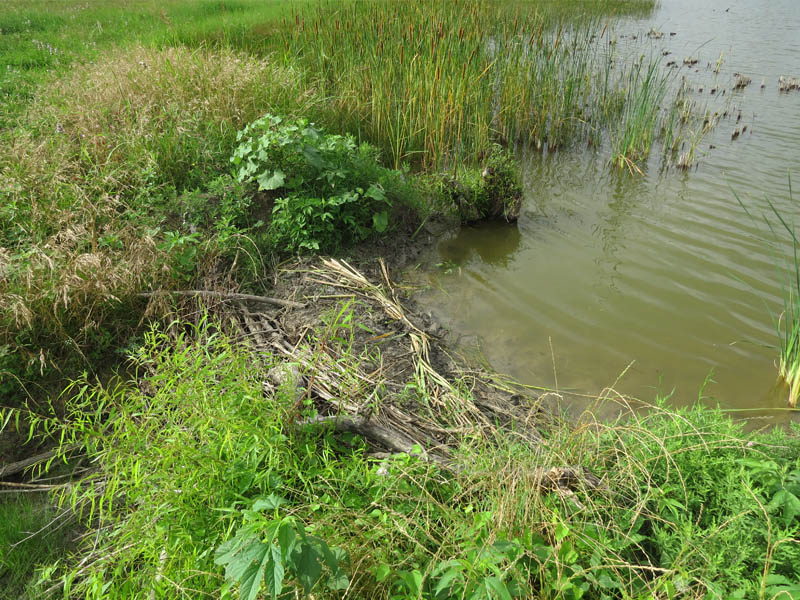

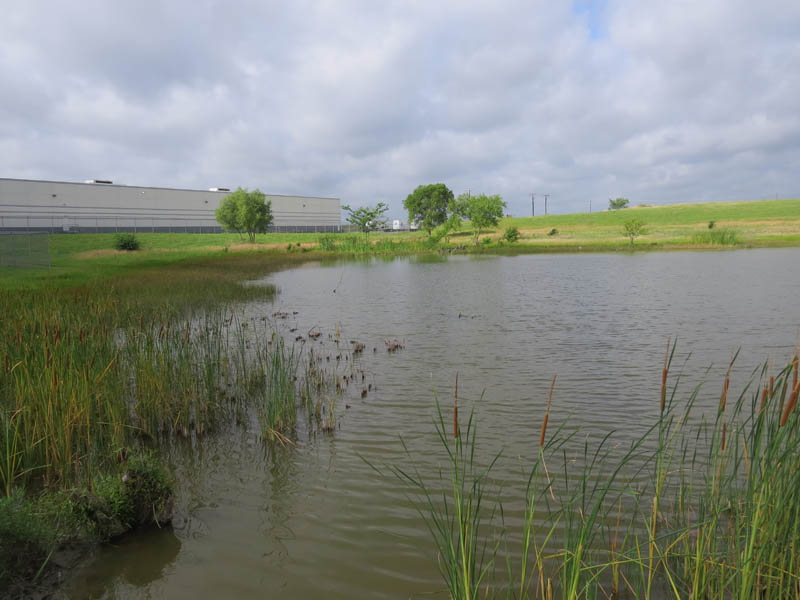

The larger pond features a running fountain which was being used by the resident turtles as a handy place to bask.

We also made something of a surprise find while we were at this location in far south Dallas County. I noticed a pair of what appeared to be medium-sized white birds flying and diving around the far side of the larger pond. From this distance the birds seemed to be roughly the size of a Killdeer with a silhouette similar to that of a barn swallow. In flight the bird looked for all the world just like an albino Nighthawk. That was an odd combination of characteristics in my experience, and I had no idea what kind of bird it was we were seeing.
Photographing the birds was difficult because of the distance and the erratic nature of their flight, but luckily I did manage one picture that was sufficient for making the proper identification.

What we have here is a Least Tern—another rare bird in North Texas in its own right. Here is how Wikipedia describes the Least Tern:
It is a small tern, 22–24 cm long, with a wingspan of 50 cm, and weighing 39–52 g. The upper parts are a fairly uniform pale gray, and the underparts white. The head is white, with a black cap and line through the eye to the base of the bill, and a small white forehead patch above the bill; in winter, the white forehead is more extensive, with a smaller and less sharply defined black cap. The bill is yellow with a small black tip in summer, all blackish in winter. The legs are yellowish. The wings are mostly pale gray, but with conspicuous black markings on their outermost primaries. In behavior, it flies over water with fast, jerky wingbeats and a distinctive hunchback appearance, with the bill pointing slightly downward.
The least tern arrives at its breeding grounds in late April. The breeding colonies are not dense and may appear along either marine or estuarine shores, or on sandbar islands in large rivers, in areas free from humans or predators. Courtship typically takes place removed from the nesting colony site, usually on an exposed tidal flat or beach. Only after courtship has confirmed mate selection does nesting begin by mid-May and is usually complete by mid-June. Nests are situated on barren to sparsely vegetated places near water, normally on sandy or gravelly substrates. In the southeastern United States, many breeding sites are on white gravel rooftops. In the San Francisco Bay region, breeding typically takes place on abandoned salt flats. Where the surface is hard, this species may use an artificial indentation (such as a deep dried footprint) to form the nest basin.
For several days I have been noticing relatively small orange dragonflies buzzing around the lakes and ponds that I have visited. I wasn’t sure what kind of dragonflies these little guys were, so I have an effort to photograph of one for identification purposes. The problem has been that these dragonflies are very fast moving and seldom stay put for long. Getting one lined up for a picture has been a bit of a challenge, but I finally did it! Meet the Eastern Amberwing:

The next stop along the way was a visit to a private bird sanctuary. Many of the birds here are quite accustomed to the presence of people and are therefore very amenable to being photographed.
The normally shy and reclusive Great Blue Heron is a great example of this. This exotic looking bird is the largest of all North American herons. These birds are typically so wary in the wild that life sized plastic model are sold to duck hunters for use a “confidence decoys.” The idea is that ducks will read the presence of a Great Blue Heron as a sign that there are no dangers present.
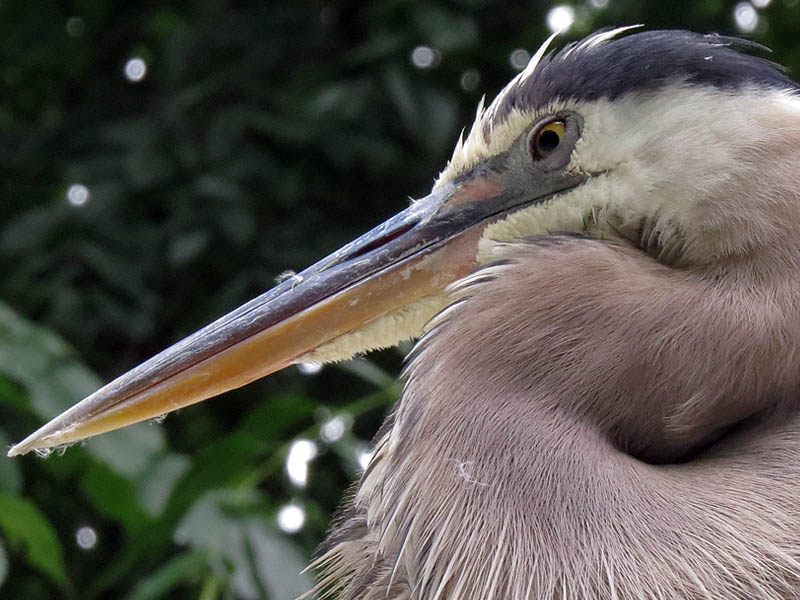
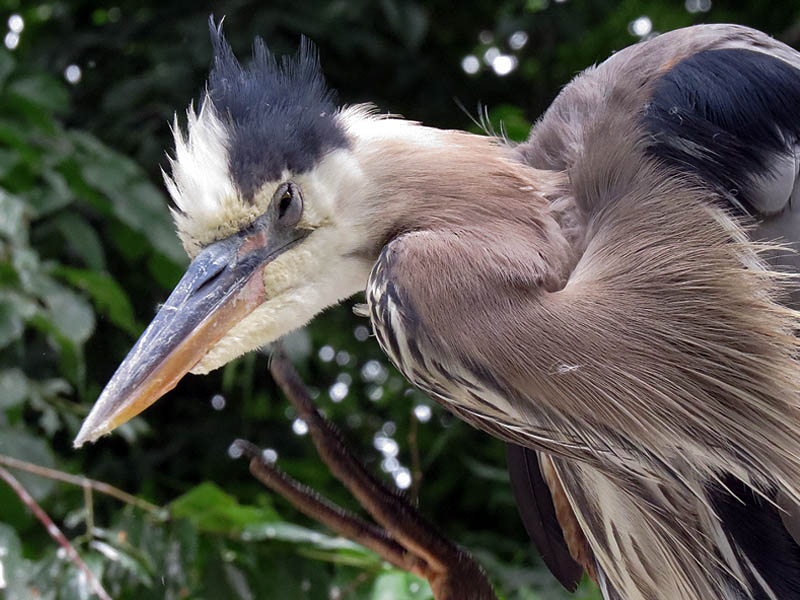
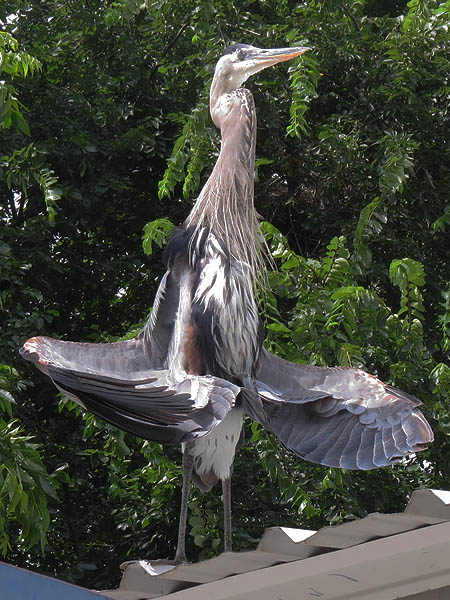
Several Black Vultures were also loitering in the immediate area. These birds were also quite tolerant of our presence, and while they did keep a close eye on us, they did not seem inclined to bolt.


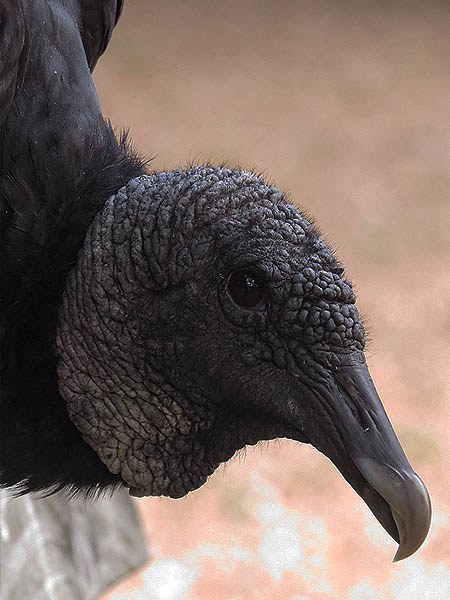
The most delightful encounter of the day was with this pair of curious and bold Blue Jays. Blue Jays are beautiful and engaging birds. Their attractive plumage is made up of various shades of vivid blues, decorated with accents of black and white. When lit up by full sunlight, these birds are really quite stunning to see.
Blue Jays are members of the Cordidae family and as such they are closely related crows, ravens, magpies, and the like. All of these bird species are noted for their intelligence, and Blue Jays are no exception.
These two jays became interested in us as we passed through a wooded area of the sanctuary. They followed us as we walked, obviously intrigued by something we had, or something we were doing. Eventually, one of the Jays couldn’t resist any longer and he swooped in and landed on my back—all in order to investigate a plastic ring on my backpack’s shoulder strap. The intrepid Blue Jay tried to remove the ring for nearly a full minute before giving up and moving on!
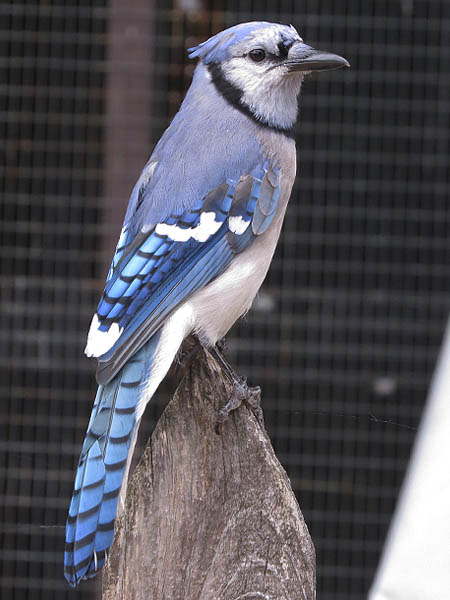

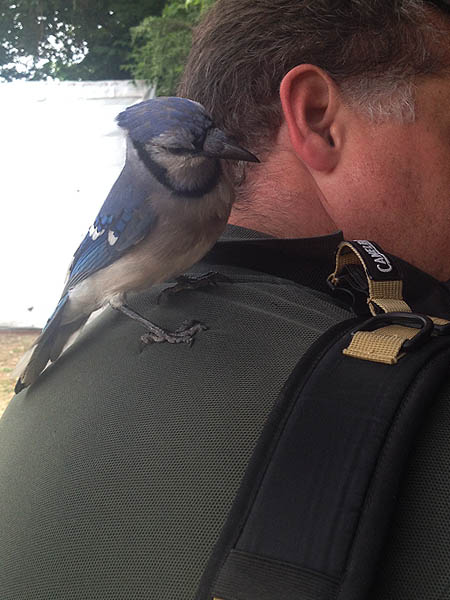
Here are some thoughts Wikipedia presents on the intriguing Blue Jay:
The blue jay is a noisy, bold and aggressive passerine. It is a moderately slow flier (roughly 32–40 km/h (20–25 mph)) when unprovoked. It flies with body and tail held level, with slow wing beats. Due to its slow flying speeds, this species makes easy prey for hawks and owls when flying in open areas. Virtually all the raptorial birds sympatric in distribution with the blue jay may predate it, especially swift bird-hunting specialists such as the Accipiter hawks. Diverse predators may predate jay eggs and young up to their fledging stage, including tree squirrels, snakes, cats, crows, raccoons, opossums, other jays and possibly many of the same birds of prey who attack adults.
The blue jay can be beneficial to other bird species, as it may chase predatory birds, such as hawks and owls, and will scream if it sees a predator within its territory. It has also been known to sound an alarm call when hawks or other dangers are near, and smaller birds often recognize this call and hide themselves away accordingly. It may occasionally impersonate the calls of raptors, especially those of the red-tailed and red-shouldered hawks, possibly to test if a hawk is in the vicinity, though also possibly to scare off other birds that may compete for food sources. It may also be aggressive towards humans who come close to its nest, and if an owl roosts near the nest during the daytime the blue jay mobs it until it takes a new roost. However, blue jays have also been known to attack or kill other smaller birds and sleeping, foliage-roosting bat species such as Lasiurus borealis. Jays are very territorial birds, and they will chase others from a feeder for an easier meal. Additionally, the blue jay may raid other birds’ nests, stealing eggs, chicks, and nests. However, this may not be as common as is typically thought, as only 1% of food matter in one study was compromised by birds. Despite this, other passerines may still mob jays who come within their breeding territories.
Blue jays, like other corvids, are highly curious and are considered intelligent birds. Young individuals playfully snatch brightly colored or reflective objects, such as bottle caps or pieces of aluminum foil, and carry them around until they lose interest. While not confirmed to have engaged in tool use in the wild, blue jays in captivity have been observed using strips of newspaper as tools to obtain food, while captive fledglings have been observed attempting to open the door to their cages.
Finally, there was this unique insect known as the Velvet Ant. These large insects (about and inch in length) are actually wasps. The Velvet Ant also goes by the name “Cow Killer” due to its powerful and painful sting. Fortunately, the Velvet ant is not aggressive ordinarily, but it will sting if sufficiently provoked.
The color of these wasps can vary. Red and orange are the most common, but black, white, silver, and gold are also possible. This is the first gold/yellow individual I have encountered. All of the previous Velvet Ants I have documented were scarlet or red.
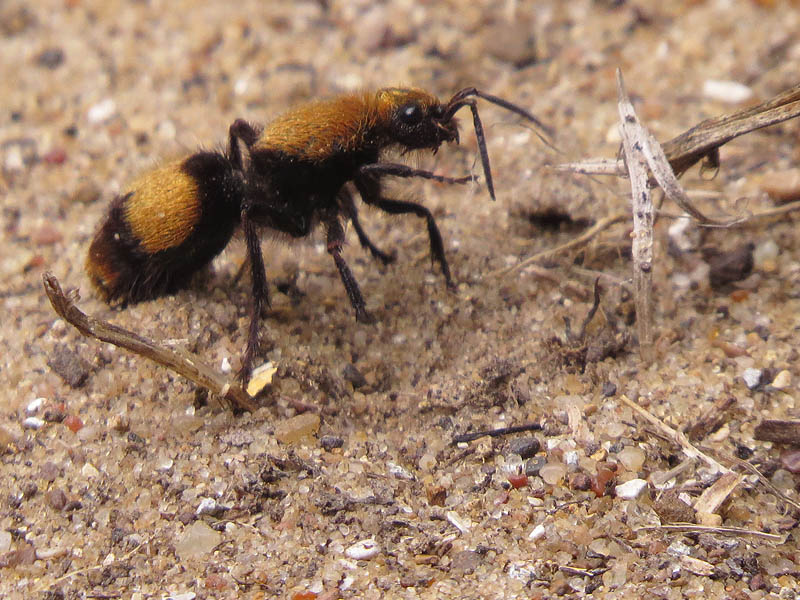
NOTE: This post is part of a continuing series of observations: [ First | << Prev | Next >> ]


